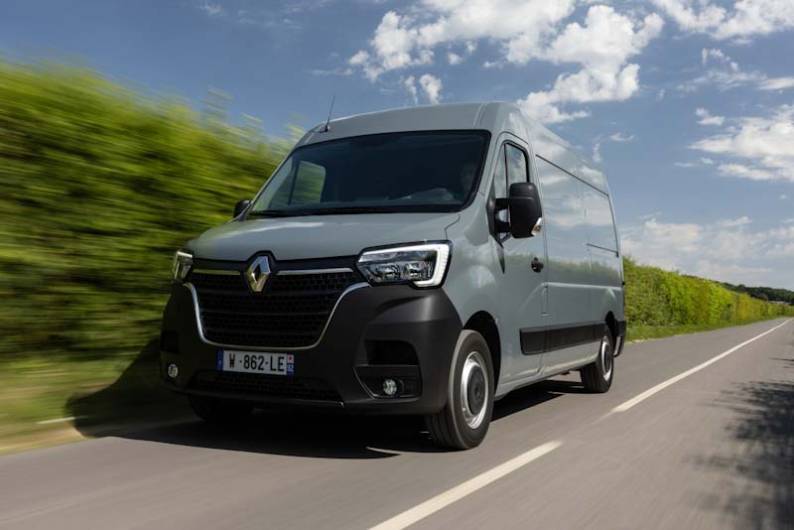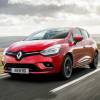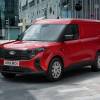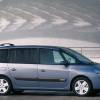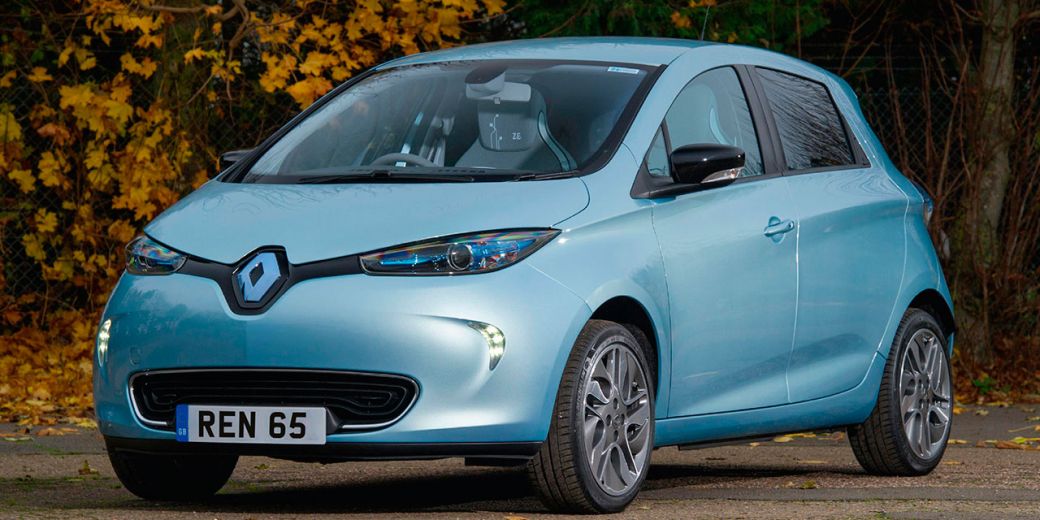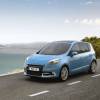
RAC sale – up to 33% off*
• Roadside cover from £5.29 a month†
• We get to most breakdowns in 60 mins or less
• Our patrols fix 4/5 breakdowns on the spot

Renault's Master E-Tech was one of the original full-electric large vans. How should you rate it now? Jonathan Crouch decides.
Ten Second Review
The Renault Master has improved its offering since launch but you'll still have to make quite a few compromises if you're to choose it over the equivalent diesel version. Still, it's more affordable than most of its rivals and a little less down on payload over the combustion model too than is the norm in this segment. Value's a draw card here, but you'll need to have the kind of business that suits what this French contender can deliver.
Background
Being first to market isn't always a good thing, as Renault has discovered to its cost over the last two decades with its pioneering role in the EV automotive revolution. Which included a leading role in electrifying large vans: the brand's big Master LCV was the first of these to offer a full-EV variant back in 2018. Not many people bought that model (badged the Master Z.E.) because, to be frank, it wasn't very good, with a feeble 33kWh battery offering a driving range of just 74 miles.
But this French maker's worked on the technology sense, a 2020 update bringing this model a new name, the Master E-Tech, and more importantly, a bigger 52kWh battery, boosting range to 126 miles. In 2022 though, Ford's E-Transit re-set what the segment can expect from a large EV van. Can this Master E-Tech keep up? Let's see.
Driving Experience
For a van of this Master's enormous size, things don't get off to the best of starts with the news that this E-Tech electric model basically borrows its drivetrain from the brand supermini-sized ZOE van. That means a 52kWh battery driving an electric motor with just 76hp. You can imagine the result of that fully-loaded up on a steep hill. Particularly if you select the available 'Eco' mode you'll need to get anywhere close to the claimed 126 mile combined cycle driving range, a setting which limits throttle usage and restricts your maximum speed to 62mph. That EV range rises to 160 miles in city traffic.
The auto gearbox has just Drive, Neutral or Reverse settings - no Park. And at low speeds, the acoustic pedestrian warning sound EVs have to have is particularly evident in the cab. High speeds are certainly not silent; obviously, it's quieter than the equivalent diesel, though not by as much as you might expect. Renault is good at brake recuperation systems; this particular set-up can't be driver-customised, but it slows the vehicle noticeably when you come off-throttle, though won't bring you right to a standstill. Even so, you'll rarely have to do much braking.
Design and Build
There are no obvious visual changes made to designate this particular Master model's E-Tech electric remit. So unless your customers notice the charging flap or the bespoke badging, you won't be scoring any extra ecological points with your deliveries, unless they happen to observe this big LCV's less rumbly approach.
Inside, it feels pretty old-style EV; an old-tech turnkey starter, a manual handbrake, and an analogue instrument cluster. Said dials are easy-to-use at a glance though and reflect the direction of energy flow and how much battery range is remaining. As on the diesel model, the steering wheel only adjusts up and down, not in and out. This is after all, quite an old design.
Otherwise, it's just as in the standard model. Renault has given a lot of thought to the depth of the footwells relative to the hip point of the seating and the degree of seat rake available, so as to offer a comfortable driving angle. A suspension-style driver's seat is standard. The design of the windscreen and side windows, plus the high-up seating position ensure commanding vertical and horizontal fields of vision of 39.9 and 193.1 degrees respectively.
A shelf is integrated into the dashboard to house a laptop computer, plus there's a mobile phone holder with a nearby 12V power supply for charging, a 7.6-litre glove box, a full-width overhead rack and a retractable clipboard built into the dashboard to hold documents like delivery slips. Plus there's a swivelling table incorporated in the middle seat back. With the middle seat back tipped forward, it can serve as a desk, complete with a swivelling table designed to hold a laptop computer.
Market and Model
Prices start at around £43,500 excluding VAT after deduction of the £5,000 government Plug-in van Grant, which makes this one of the most affordable large EV vans out there. There's only one trim level - 'Advance' - only one 52kWh battery option, one 76hp motor output option and two body sizes - standard 'MM35' L2H2 and long 'LM35' L3H2 versions. Both must be had with front wheel drive. You're looking at a like-for-like premium of only around £10,000 over the equivalent diesel model. Platform chassis cab variants are also available.
'Advance' trim gives you quite a lot. Air conditioning with a pollen filter, rear parking sensors, a suspension-style driver's seat and a pivoting seatback table with a dual-split under-seat storage compartment. By law, this van has to have an acoustic sound system for low speeds - Renault calls it the 'E.V, Voice'. This Master E-Tech also comes with an engine speed limiter restricting you to 62mph. The 6-metre standard charging cable is of the 32A Type 2 Mennekes type (so won't fit in a domestic socket - you'll need to pay extra for a lead like that). And there's a tyre repair kit replacing the usual spare wheel.
There are also a number of driver aids that improve safety, such as the Grip Xtend function that optimises grip on soft surfaces, hill start assist, stability control with load adaptive control and simpler things such as a wide view mirror built into the passenger sun visor that eliminates the traditional blind spot.
Practicalities and Costs
As usual with an EV van, the loading area size isn't compromised by the EV drivetrain. The Master E-Tech comes with the mid L2 and long L3 body lengths, but only with standard H2 roof height in either case. That means 3,083mm of load bay length in the L2 or 3,733mm in the L3. And 1,894mm of load bay height in either case. There's 1,765mm of load area width, narrowing to 1,380mm between the wheel arches. The sliding side door is 1,270mm wide and 1,780mm high. Load capacities are 10.8m3 in the L2H2 or 13.0m3 in the L3H2. Gross payload is obviously down on that of an equivalent diesel - to 1,279kgs. And there's a three year/100,000 mile warranty, with an extra year for the drivetrain. The battery warranty is five years/62,000 miles.
We gave you the EV mileage figures in our 'Driving section': 126 miles on the combined cycle and 160 miles in city traffic. Renault reckons though, that low winter temperatures could take as much as 26 miles off either of those figures. You'll want to know about charging. At a 22kW public charging point, you'll need 3 hours to charge the battery from empty to full. It would be an hour and 30 minutes if you charged from 20 to 80%. Connected up to a 3.7kW wallbox at your home or office, the charging time would be 32 hours from empty to full: or 16 hours from 20 to 80%. It's more likely that you'll have a 7.4kW wall box, in which case the figures will be 9 hours 30 minutes from empty to full; or 5 hours from 20 to 80%. Renault believes that the cost for a full recharge would be less than £15 at current electricity rates, which works out to just under 12p per mile.
Summary
All the current big electric vans are, to some extent, a design compromise, originally created for diesel power, now converted to electric. With some of these EV commercial vehicles, the design changes go deeper than others, but the Master E-Tech isn't one of them. Still, as a pioneer in the segment, you wouldn't expect that and it's certainly impressive just how far Renault has developed this model since its original launch in 2018.
The very modest 76hp power output though, will restrict what you can do with this LCV. Like its Stellantis Group segment competitors from Vauxhall, Citroen, Peugeot and Fiat, it's really just targeted at urban users who need to take large, bulky, light things over short distances. No doubt the replacement for this model will be able to do more than that, but for the time being, this Renault knows its niche.

